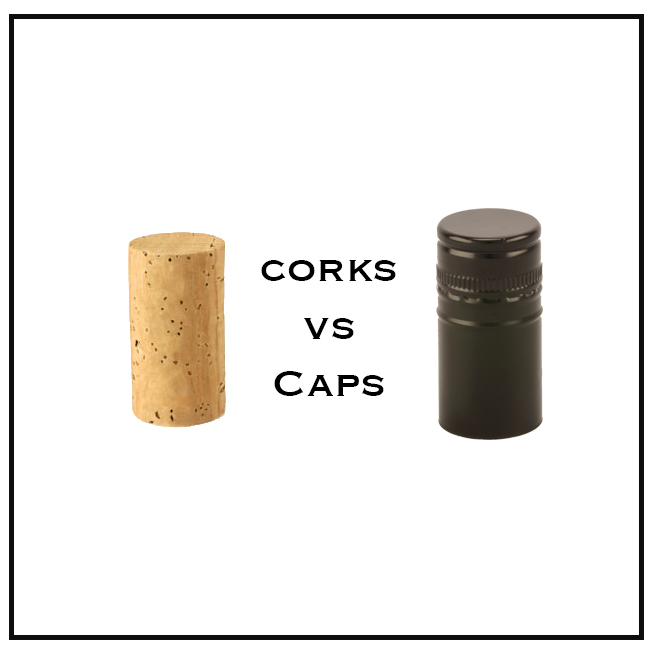
It’s a question as old as screw caps (corks have been around a while). And the simple answer is – it depends. Let’s dig into the differences because despite some technical issues, so wines are just better in one or the other. Ultimately, it’s a winemaker choice.
Cork has been the preferred closure for wine bottles since the late 1600s, basically when we developed the ability to make relatively uniform glass bottles in volume.
Cork is made from the bark of the Cork oak tree. The bark grows thick and spongy. Experts use blades to carefully remove the thick back in sheets without damaging the underlying tree materials. The bark then grows back over a period of 7 to 9 years, just in time for another harvest. Most of the corks used in commercial production are from Portugal and a bit from Spain. The corks we know are then punched from the cork bark, cleaned and sent to the bottler.
The cork has a wonderful pliable nature that allows the bottler to squeeze the cork into the neck and have it stay put for a long time. The other neat feature of the cork is that it is permeable to oxygen. This means a low dose of oxygen gets to the wine over the life of storage. The wine reacts with the oxygen, forming wonderful tertiary flavors and aromas that were not in the wine when it was bottled. We call them tertiary, because the primary flavors come from the grape, the secondary flavors are developed in the winery. Things that happen after the winery, tertiary.
There is a downside to cork. When the cork is cleaned during production, naturally occurring chemicals in the cork react with the cleaning products to form TCA (2,4,6-trichloroanisole). While this chemical is not harmful to humans, we can detect it into the parts per trillion and it smells like wet dog, musty basement or wet cardboard. The problem is, that means your wine tastes and smells like one of these undesirable items. Producers have improved their processes and corked wine represents less than 5% of all bottles.
Beyond the positives of aging and the negatives of TCA, there is a romantic element to corks. The visceral feel one has when you pop a cork out of a bottle has to make you smile. It means good times are ahead, perhaps good food and hopefully time with good friends. This is especially so for that wonderful pop of a champagne cork.
Screw caps are a relatively perfect closure. Made of aluminum, with a synthetic contact surface with the glass, nothing is getting in or out of the wine with a screw cap. The good news is – no cork – no TCA and no corked wine. The bad news is since there is no oxygen infusion, the wine will not age or change over time. The wine will be basically as it left the winery.
The inert nature of this closure is great for the winemaker as the consumer will drink exactly what they created, as it left the winery. Of course, this assumes they haven’t stored the wine on top of the refrigerator or in the trunk of car. Heat will still kill a wine, even with a screw cap.
There are plenty of other closure types, from glass stoppers to synthetic cork to highly engineered polymer and rubber corks. I don’t plan to dive into these, but they are all trying to simulate the oxygen permeability of cork without the risk of TCA and hopefully at a lower cost.
So, the question, “which is better?” For fine wines, that deserve to be aged and would benefit from the gentle aging delivered by a cork, then a cork is best. This generally means red wines and superior red wines that are designed to be aged to release the full potential of the creation by the winemaker. Simpler reds probably could be in a screw cap because they are “drink now” kinds of wines.
Screw caps can be used for almost all white wines, except a limited number of extremely high-end white wines that develop complexity with age. Simple whites that are designed to be drunk within a year or two of production, a screw cap is perfect, retaining the fresh fruity character of the wine.
Now, this sounds simple but there are plenty of simple wines under cork for cost reasons and for the romantic nature of popping a cork. It makes the wine seem fancy and perhaps more premium than it really is. The other factor is consumer perception. It’s hard to conceive of a high-end wine in a screw cap bottle. But if that wine wouldn’t benefit from age, like some Australian Shiraz, then a screw cap is fine. The problem is, it might not fly off the shelves due to our preconceived views.
Screw cap or cork, there is good wine in either bottle, so drink up!
Cheers!

